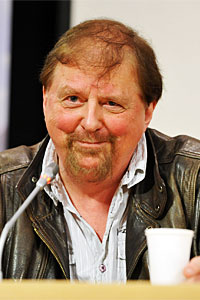
'The people behind what is taking place think they will be able to harm the government," said Iran's First Vice-President, Eshaq Jahangiri. "But when social movements and protests start in the street, those who have ignited them are not always able to control them." And the question is: which people did Mr Jahangiri actually mean, and which government?
The hard-liners insist that the protests that broke out on Thursday and have continued every day since are the work of "anti-revolutionaries and agents of foreign powers". Iran's Islamic Revolutionary Guard Corps has warned anti-government protesters they will face the nation's "iron fist" if political unrest continues.
But there are actually two governments in Iran. One is the elected government of President Hassan Rouhani, a reformist who won a second term last June. The other consists of the clerics and Islamic extremists who serve the "Supreme Leader", Ayatollah Ali Khamenei -- and it's he who has the last word in both theological and political matters.

Gwynne Dyer is an independent journalist whose articles are published in 45 countries.
There is always great tension between the two when Iranians elect a reformist government, and Eshaq Jahangiri has always supported the cause of moderation and reform. What he was actually signalling, in his cryptic remark, was his suspicion that the protests about economic conditions were initially incited by the hardliners to harm Mr Rouhani's government -- and then got out of hand.
Iranians certainly have lots to protest against. Living standards have fallen 15% in the past 10 years. More than three million Iranians are jobless, and youth unemployment is about 40%. The price of some basic food items, like chicken and eggs, has recently risen by almost half.
It's not really Mr Rouhani's fault. The main problem is that despite the 2015 deal that ended most international sanctions against Iran in return for strict controls on Iranian nuclear research, US financial sanctions remain in place. That has made most banks wary of processing money for Iran or extending credit to its firms, and so the promised economic benefits of the deal never arrived.
It is natural for ordinary people to blame the government when promised economic improvements don't happen, and so it may well have occurred to hardliners to exploit that anger to discredit the reformist government. But the anger went deeper than that, and quickly turned into a protest against the Islamic regime in general.
One significant piece of evidence that Mr Jahangiri's veiled accusation may be true is the behaviour of the state-run media. They reported virtually nothing about the much bigger demonstrations in 2009, but they gave front-page exposure to the current protests on the first day of the demos. Then, as the protesters' demands grew more radical, the state media stopped reporting on them.
In any case, Mr Rouhani is no longer the prime target of the demonstrations, and they are no longer just about prices and jobs. They are protests against the entire regime, and the slogans are explicitly political. Previous outbreaks of protest have been put down by force in 1999, 2003, 2006 and most spectacularly in 2009, but three things are different about the current demonstrations.
The first is that the unelected parallel government of the mullahs, headed by Ayatollah Khamenei, is no longer sacred and beyond criticism. The crowds have been chanting "Death to the dictator" and even "Death to Khamenei", which is unprecedented in the history of the Islamic Republic. There have even been calls for the return of the Shah who was overthrown in 1979.
Secondly, for the first time the demonstrations began not in Tehran but in provincial cities. The initial outbreak was in Iran's second city, Mashhad, which is traditionally seen as a very conservative place. The protests only reached the capital on Saturday -- and they have broken out in a dozen smaller cities as well.
And the third thing is that the majority of protesters this time are not middle-class students and professionals but lower-class people with very little to lose. This may also be why the crowds are less disciplined and more likely to answer violence with violence this time around.
None of this necessarily means that the Iranian regime is on the brink of collapse. It has already cut off the social media that the protesters use to organise, and it is notorious for its willingness to use force against its own citizens. Most opposition leaders are in jail or in exile, and there is no visible coordination among the protests.
All the other waves of protest failed; this one likely will too. But once events like this start to happen, especially in the Middle East, almost anything is possible.
